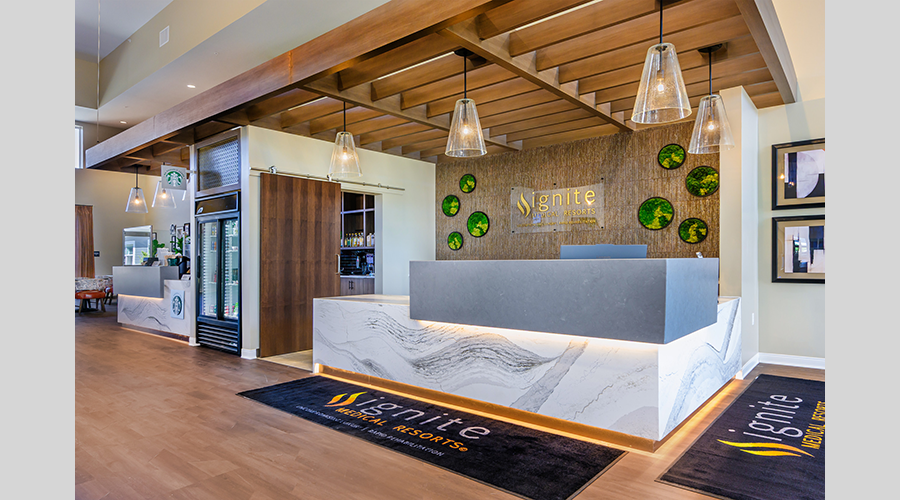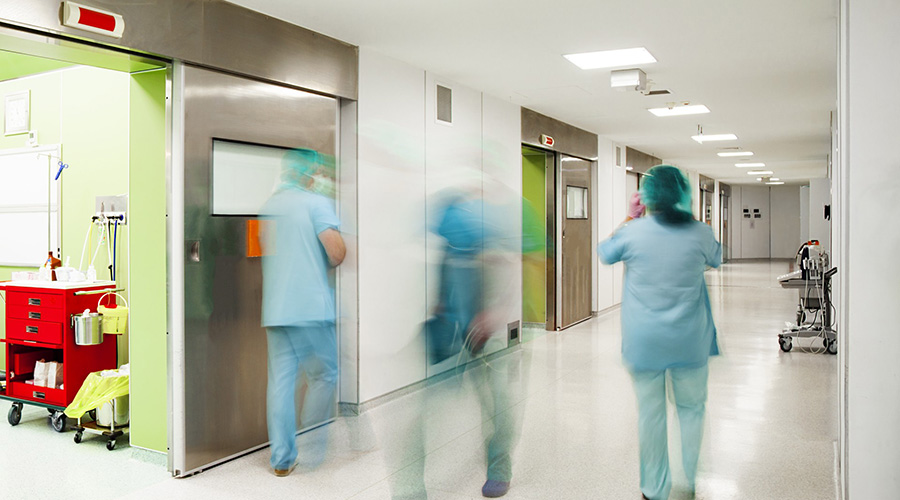From the start of the pandemic, many unsung heroes have emerged. Well-deserved attention has been on frontline workers, but countless people are also behind the scenes enabling the response every day.
For one, healthcare facilities managers are making sure infrastructure doesn’t fail in order to reduce the spread of COVID-19 and provide comfortable, safe environments for staff and patients. They’re also supporting rapid capacity expansion.
Healthcare facilities musts
At any given time, the mission-critical nature of hospitals and healthcare facilities requires a high availability of services. The pandemic has forced buildings and their caretakers beyond these standard procedures. Working with hospital leadership and infectious disease specialists, facilities managers have become the backbone of operations.
Power must be continuous and HVAC systems must operate efficiently and optimally to help save lives and contain the spread. Particular areas of consideration for minimizing risk include air change rates, pressure, humidity and filtration — especially in areas isolated for infected patients, control access and resilient electricity supplies.
Keeping the air clean
Early on, the possibility of air and surface transmission was debated. At this point, hundreds of scientists agree that the potential for inhalation exposure to the virus through microscopic respiratory droplets at short to medium distances is significant. Managers must maintain high volumes of air change rates throughout the facility.
Air pressure should be kept in a negative scale to ensure airflow is going in the correct vector. Past research showed that infections can be transmitted when air pressure is reversed due to door openings. Thus, the areas isolated for infected patients should be maintained at a negative pressure to their surrounding areas as well as continuously monitored and recorded. If compromised, staff should be informed via local displays and/or direct notifications.
Avoiding compromise means managing and controlling access through the use of access control systems. This will restrict entry and limit the amount of healthcare providers exposed. The airlock is also important to provide an ante room where healthcare providers apply their PPE. By making sure both doors are not open at the same time, the pressure regime isn’t impacted.
In addition to making building occupants more comfortable, the temperature and humidity regulated through HVAC systems can also impact bacteria and virus growth and survival. As virus information has evolved, the consensus shows a correlation between low humidity and greater spread.
The areas isolated for infected patients should be equipped with both temperature and relative humidity monitoring. Though this type of monitoring may not be available throughout the entire hospital, IoT sensors can enable room level monitoring. The technology gives a more detailed analysis for facilities and infection control teams to understand where humidity might have an impact on bacteria (high humidity) or viruses (lower humidity).
The virus’ particle size must also be considered. As it’s very small, suitable filtration is needed to reduce movement and transfer from one place to another. While the air from an area isolated for infected patients should be exhausted directly outdoors, high-efficiency particulate air (HEPA) filters are still needed. Monitoring sensors can deliver dirty status information. Personnel safety procedures should be followed when changing filters.
Protecting power
Facilities managers help ensure resiliency against grid instability. If power is lost from the grid, redundancies must be in place to keep patients safe and systems running without interruption. They’re increasingly turning to microgrid and other renewable technologies to ensure energy is continuous at a moment’s notice in the event of a power outage.
An electrical network or building management system failure can stop a hospital’s ability to deliver care. Without power, the tragic loss of life from COVID-19 would be even more staggering, as countless survivors have been put on ventilators. Healthcare facilities managers are also moving to proactive, predictive monitoring and preventative maintenance to help anticipate, and preemptively address, any issues that could put clinical operations at risk.
Of course, clean air and power mean little if a healthcare facility can’t handle the number of patients needing care. Thankfully, while outbreaks are spiking in some areas right now, the influx from earlier in the pandemic has abated. Nevertheless, facilities must remain alert and ready, and managers lead the way.
As mentioned, HVAC, power distribution and other infrastructure components can help build new standalone solutions, be added on to existing systems or deployed individually on an as-needed basis. But when rapid capacity is required, like with COVID-19, all-in-one solutions can be a better option.
Temporary medical spaces range in sophistication from tents to pre-fabricated ICUs and include HVAC control, IT networking and power distribution. The most basic option is the tent clinic, which can be either drive-through for mobile testing clinics or multi-purpose, which can serve as patient check-in rooms, clinical spaces and overflow areas.
The more sophisticated options are shipping containers and pre-fabricated spaces designed to house clinical treatment rooms and ICUs. These spaces can support differing levels of pressurization control and can be added in modular, scalable increments.
In any case, facilities managers must keep these temporary medical spaces powered, online and climate-controlled just as they would any other building.
Unsung heroes
As healthcare systems around the world continue to take measures to control and isolate the virus, healthcare facility managers will be central to success. Overall, they ensure the correct operation of ventilation systems to achieve the needed air changes and pressure regime. They’re providing critical alerts to facility and clinical staff when safety might be compromised.
They record and analyze performance of critical areas and plan for maintenance on filters, manage access and the movement of people and safeguard power availability. In the most extreme cases, they are creating entirely new facilities to manage patient inflow.
Under normal conditions, the physical infrastructure systems that provide hospitals with power, heating, cooling, ventilation and environmental controls run quietly in the background — recognized by the vast majority of hospital facility occupants only if they fail. On a normal day, facility managers make sure this doesn’t happen. Now, during this pandemic, the importance of their role cannot be overstated. Let’s add them to the list of heroes.
Chris Roberts, Healthcare Solutions Architect at Schneider Electric.

 The Rising Strategic Value of Owner's Reps in Healthcare
The Rising Strategic Value of Owner's Reps in Healthcare Lawrence Group Designs Pair of Ignite Medical Resorts in Missouri
Lawrence Group Designs Pair of Ignite Medical Resorts in Missouri Construction Complete for Centra Langhorne Medical Center
Construction Complete for Centra Langhorne Medical Center Making the Energy Efficiency Case to the C-Suite
Making the Energy Efficiency Case to the C-Suite How to Avoid HAIs This Flu Season
How to Avoid HAIs This Flu Season